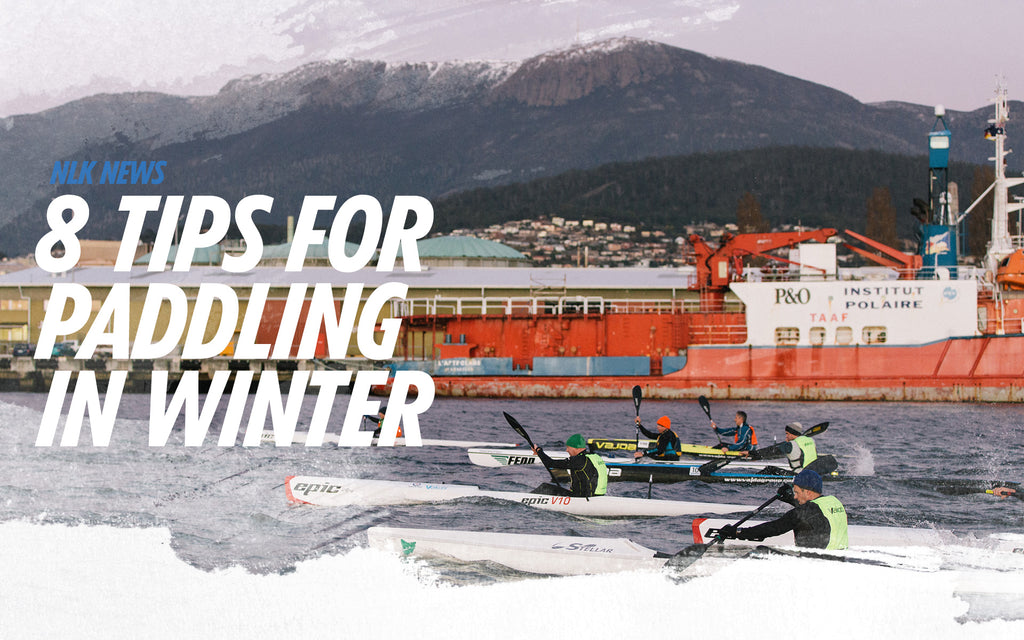8 Tips for Paddling In Winter

At NLK we paddle in Hobart, on the doorstep of the Southern Ocean and in the shadows of Mount Wellington - it can get cold and things can get real in a hurry at this time of year. We like to think it makes us tough! Whether you're from Hobart, Tasmania, the mainland or further afield there's no need to let Winter conditions slow you down too much - try focusing on these 8 essentials to keep you going rain, hail or shine!
1. Get connected
Heading out for a paddle in the cold or dark is never much fun on your own, so organise a group to keep your motivation levels up. Whether it's fitness, fun or the food afterwards...group paddling is always better...and much safer too. Establish good communication methods to keep regular members of your group in the loop before, during and after sessions.
2. Know before you go
Check the forecast and plan your paddle accordingly. Seek out some good advice if you're not sure. Develop a sound knowledge for the conditions in your local area and be prepared to change paddling plans at short notice.
3. Dress warm!
Assemble some quality kit that will keep you warm while wet. Get serious about your layering - base layers combined with windproof layers are a good idea. Consider covering your feet and head on really chilly days or during sessions where you're not planning to paddle hard.
4. Safety first
Check your gear - give your boat (rudder, rudder lines, hatches, footplate, leg leash attachment, hull & deck) and paddle (adjuster, blade/shaft join) the once over. Wear a PFD and leg leash. Carry a mobile phone and have that important number easily accessible. Wear something bright. Practice your skills so remounting your ski is not unfamiliar. Tell a non-paddler when you're going and when you'll be home. Be honest with how your skill level measures up to the conditions or the group you're going with and make the call to sit out the session if you need to. Obey the rules and regulations for paddling at night. In Tassie that's a white light visible from 360 degrees (which often means 2 lights - one at the back and front). Watch out for other craft on the water and don't set out to cross large bodies of water, especially after dark.
5. The 2 minute rule
Often you only need 2 minutes of sheltered water to get a worthwhile paddling session done. For most of us that's 400 to 500 metres. There's often lots of shelter close to shore such as marinas, docks, jetties, pylons or even a secluded part of your favourite lake or river. If these locations have good levels of natural or artificial light...even better!
6. Slow down to speed up
Take the time to work on your technique for benefits later in the year. These sessions might not be long or hard, but they will probably improve your paddling more than any other type of training! Again, these sort of sessions don't require much space on the water.
7. Revel in the conditions!
Big southerly downwinders are the best! We often get some strong westerly winds at this time of year as well - harder to predict but always a thrilling ride! If you've progressed to the level where these sort of conditions are your "thing", Winter is full of opportunities :-)
8. Cross train
Gym, swimming, running and rowing/paddling/cycling ergometers all have their uses during Winter.
If all else fails ... relax ... sit it out for a few days and dream of paddling somewhere warm! Have fun and be safe out on the water this Winter.